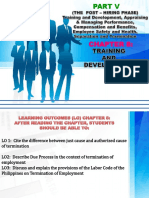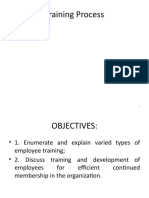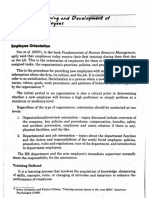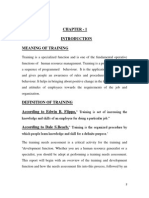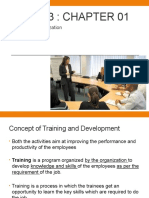0% found this document useful (0 votes)
138 views4 pagesTutorial HRM 549 Chapter 1
This document outlines the steps in designing a training program:
1) Conduct a needs assessment by analyzing needs at the organizational, occupational, and individual levels.
2) Create a learning environment and ensure skills are transferred from training to the job.
3) Develop a training evaluation plan to collect feedback and measure the impact of training.
4) Implement the training program by advertising it to learners and facilitating their participation and development.
Uploaded by
Shira EjatCopyright
© © All Rights Reserved
We take content rights seriously. If you suspect this is your content, claim it here.
Available Formats
Download as DOCX, PDF, TXT or read online on Scribd
0% found this document useful (0 votes)
138 views4 pagesTutorial HRM 549 Chapter 1
This document outlines the steps in designing a training program:
1) Conduct a needs assessment by analyzing needs at the organizational, occupational, and individual levels.
2) Create a learning environment and ensure skills are transferred from training to the job.
3) Develop a training evaluation plan to collect feedback and measure the impact of training.
4) Implement the training program by advertising it to learners and facilitating their participation and development.
Uploaded by
Shira EjatCopyright
© © All Rights Reserved
We take content rights seriously. If you suspect this is your content, claim it here.
Available Formats
Download as DOCX, PDF, TXT or read online on Scribd
/ 4






